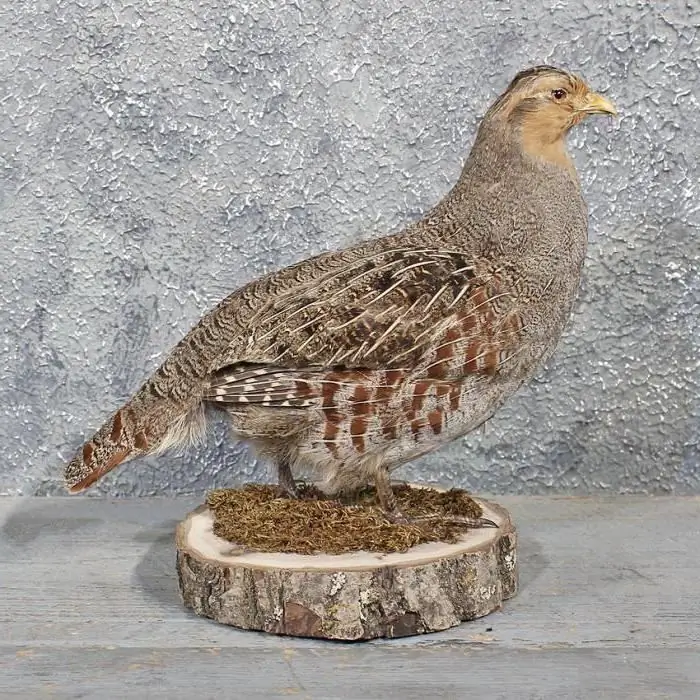2025 Author: Howard Calhoun | [email protected]. Last modified: 2025-01-24 13:10:47
Keeping laying hens in the country has many benefits. After all, a home-made egg in terms of its nutritional properties is incomparable with a store-bought one. There are different breeds of laying hens. Photos are easy enough to find. However, in households it is best to keep hybrid breeds of birds with colored plumage.

They are less excitable, calmer and have better egg production than white birds. It is better to buy chickens in early spring. Sale of laying hens is carried out by special nurseries and poultry farms. You need to buy individuals that are no more than 3-4 months old.
Accommodation
Keeping laying hens in the country implies their correct placement. For these purposes, you will need a dried and prepared poultry house. Its area is determined at the rate of 4 individuals per 1 m2. On the floor, you must first lay straw, hay or dry sawdust (a layer of at least 5 cm). Of course, over time, the layer of litter can be gradually increased. On the floor you need to install drinking bowls and containers for feeding. Their edges should be at the level of the birds' backs. The maintenance of laying hens in the country requires the creation of perches in the poultry house near its walls (height fromfloor about 60 cm).

Poles (diameter 3 cm) are suitable for these purposes. Their total length should be sufficient to accommodate all the chickens. In a shady place, you need to arrange nests for laying eggs (1 for 4 individuals). The ideal option would be to create a paddock fenced with a net where you can release the bird. There you need to create mounds of sand and ash in which the chickens will bathe - clean their feathers. If the area is very limited, then the bird can be placed in special cages. This does not affect egg production.
Optimal temperature and lighting
Keeping laying hens in the country requires maintaining a certain temperature range in the house (12-20 C). If the room is cold and the water freezes in the drinkers, the egg production of the bird can drop sharply. In addition, it is necessary to establish ventilation in the poultry house so that there is constant access to fresh air (transoms, exhaust ducts). Chickens are very demanding on the level of lighting. Therefore, the chicken coop should have electric light. The total lighting time (taking into account natural daylight) should not be less than 17 hours a day.

Feeding
For birds to get the nutrients they need, they need to be fed properly. Grains such as wheat, corn and barley are most suitable for them. For better digestibility, cereals are best given to chickens in crushed form. Grain feed in the diet of poultry should be at least 60%. But half of this norm can be completely replaced with food waste: boiled potatoes, peelings,leftover cereals. To meet the protein requirement, chickens need to be given protein feed. These are, as a rule, various meals and cakes. Their share in the diet of poultry should be about 15%. The most valuable feed is fishmeal. This product contains a lot of proteins. However, in its absence, you can give chickens finely chopped fresh fish. This greatly increases egg production. To meet the vitamin needs of chickens, they are given (especially in spring and summer) nettle, goutweed, alfalfa and some other herbs. In autumn and winter, you can give carrots and pumpkins, as well as vitamin preparations. The bird must have access to the gravel.
Recommended:
Laying hens. Content and breeds

At present, it is possible to develop a business related to poultry farming on a personal plot or a small summer cottage without large material investments. To do this, you need to plan well the content of chickens, their feeding, choose the right breed of poultry
Partridges: breeding and keeping at home. Breeding and keeping partridges at home as a business

Breeding partridges at home as a business is a wonderful idea, because so far it is exotic to some extent, does not require significant investments at the start (or even none at all), there is no special knowledge for growing an unpretentious and little sick bird need. And demand today exceeds supply. This business can be especially interesting in small towns and villages where there are problems with employment and other types of earnings
Caring for quails at home: keeping, breeding and feeding rules for birds

With the observance of technology, even in a small farm, it is possible to keep up to 50 heads in a cage measuring only one square meter without any problems. This is more than enough not only to provide your family with high-quality meat and eggs, but also to make good money selling them. But in order for quail care to be as simple as possible, it is necessary to consider a number of criteria
Large rabbit cage: description, size, features of keeping and caring for rabbits

Rabbits are quite popular pets. Their content must be approached responsibly. First of all, you need to purchase or make a high-quality spacious cage with your own hands, in which your pet will be comfortable
Household incubator "Laying hen". Incubator "Laying hen": description, instruction, reviews. Comparison of the incubator "Laying hen" with analogues

"Laying hen" is an incubator, very popular among domestic owners of household plots. The use of these convenient, fully automatic devices allows you to achieve a hatchability of chicks up to at least 85%. Egg incubation takes almost no time

